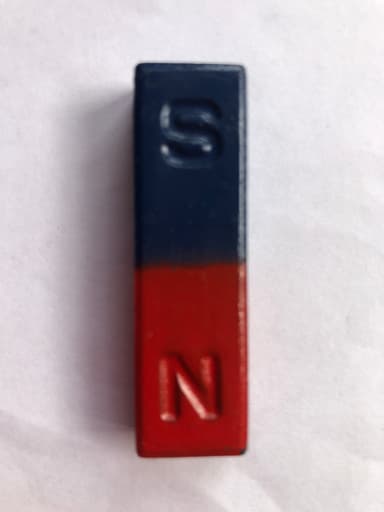Using magnets to solve problems (non-statutory: Scientists and Engineers)
I can give examples of how engineers use results of science to design solutions and help solve everyday problems.
Using magnets to solve problems (non-statutory: Scientists and Engineers)
I can give examples of how engineers use results of science to design solutions and help solve everyday problems.
These resources will be removed by end of Summer Term 2025.
Switch to our new teaching resources now - designed by teachers and leading subject experts, and tested in classrooms.
These resources were created for remote use during the pandemic and are not designed for classroom teaching.
Lesson details
Key learning points
- Humans have found magnets to be useful in their everyday lives
- Everyday uses of magnets include compasses, electronic devices and games
- Maglev trains do not use an engine because they move forwards using magnets, similar to some roller coasters
- Engineers design and build things, using their knowledge of maths and science
- Men and women can become different types of engineer. They need to be curious, creative and observant
Keywords
Everyday uses - Everyday uses are the ways in which we use things in our lives such as using a kettle to heat water.
Electronic devices - Electronic devices are machines of pieces of equipment that are powered by electricity, like computers and phones.
Maglev train - A Maglev train is a type of high-speed train which uses magnets to reduce friction forces and to move.
Engineer - An engineer is a person who designs and builds things.
Design - To design something is to make a plan and a drawing describing how it could be built.
Common misconception
Engineers are only men and just like to repair or fix things.
Explicit teaching and discussion of the range of engineers and the different skills engineers need.
To help you plan your year 3 science lesson on: Using magnets to solve problems (non-statutory: Scientists and Engineers), download all teaching resources for free and adapt to suit your pupils' needs...
To help you plan your year 3 science lesson on: Using magnets to solve problems (non-statutory: Scientists and Engineers), download all teaching resources for free and adapt to suit your pupils' needs.
The starter quiz will activate and check your pupils' prior knowledge, with versions available both with and without answers in PDF format.
We use learning cycles to break down learning into key concepts or ideas linked to the learning outcome. Each learning cycle features explanations with checks for understanding and practice tasks with feedback. All of this is found in our slide decks, ready for you to download and edit. The practice tasks are also available as printable worksheets and some lessons have additional materials with extra material you might need for teaching the lesson.
The assessment exit quiz will test your pupils' understanding of the key learning points.
Our video is a tool for planning, showing how other teachers might teach the lesson, offering helpful tips, modelled explanations and inspiration for your own delivery in the classroom. Plus, you can set it as homework or revision for pupils and keep their learning on track by sharing an online pupil version of this lesson.
Explore more key stage 2 science lessons from the Simple forces including magnets unit, dive into the full secondary science curriculum, or learn more about lesson planning.

Equipment
None required. If you have a stacking ring magnet tower, this could be used to support task B.
Licence
Starter quiz
6 Questions





S and S poles next to each other
S and N poles next to each other

Exit quiz
6 Questions

Wondering why things happen
Drawing and making things
Noticing things



allows trains to travel faster
slows down trains



